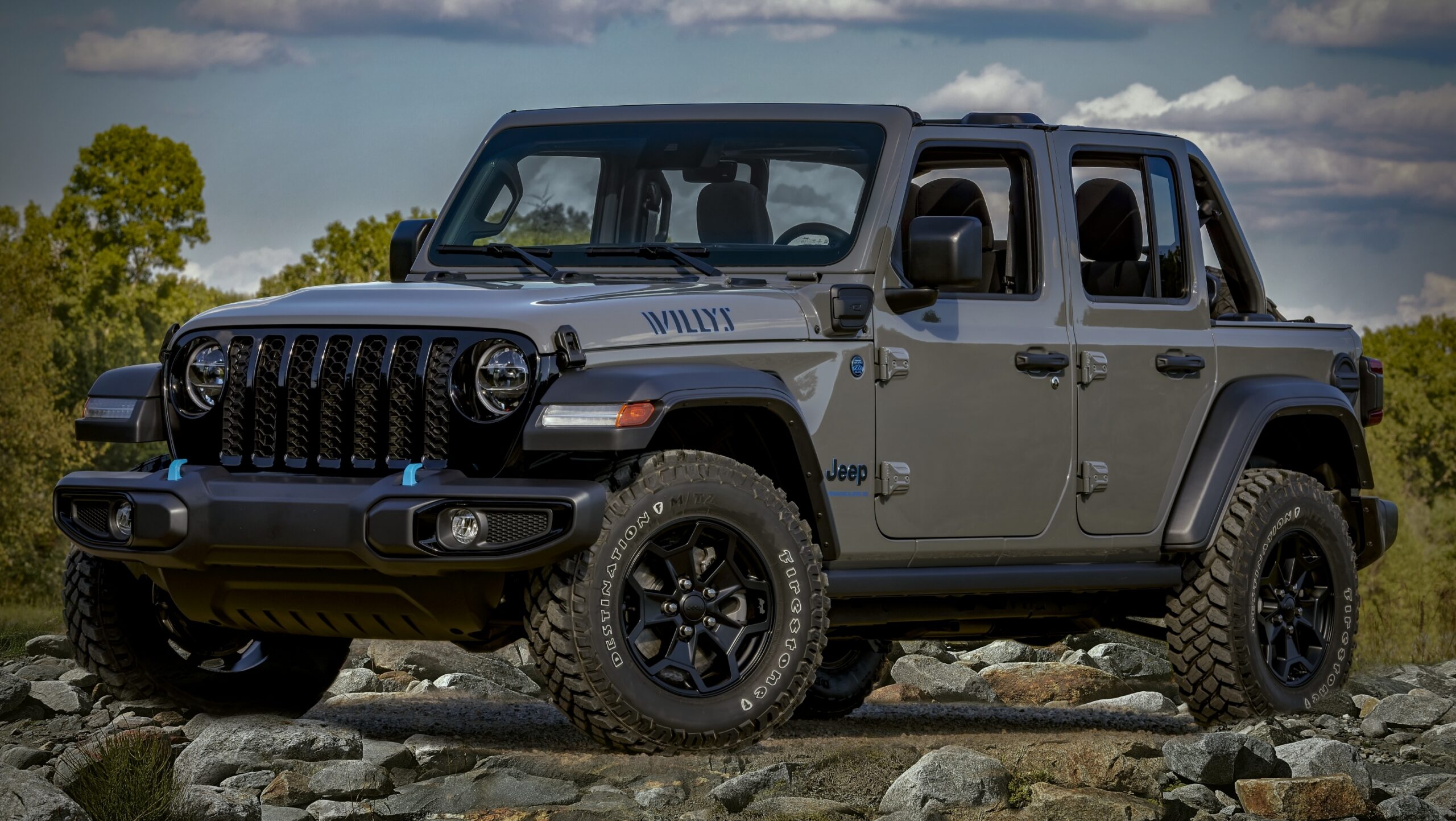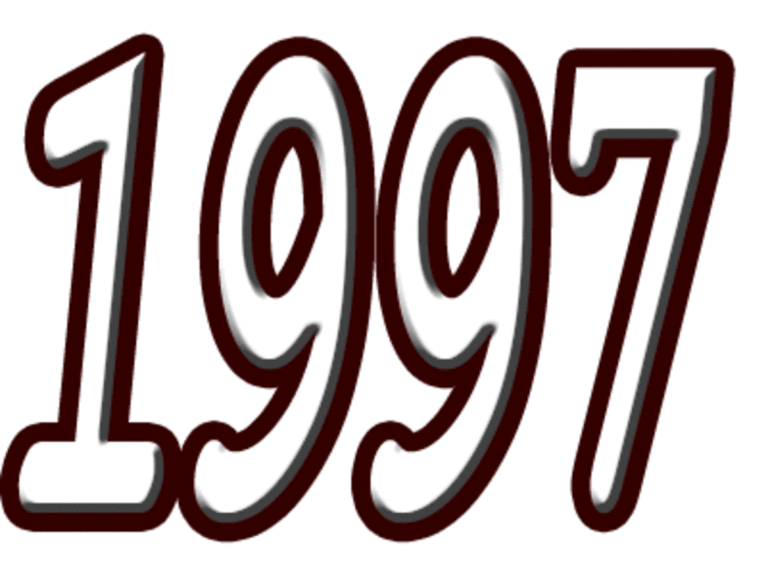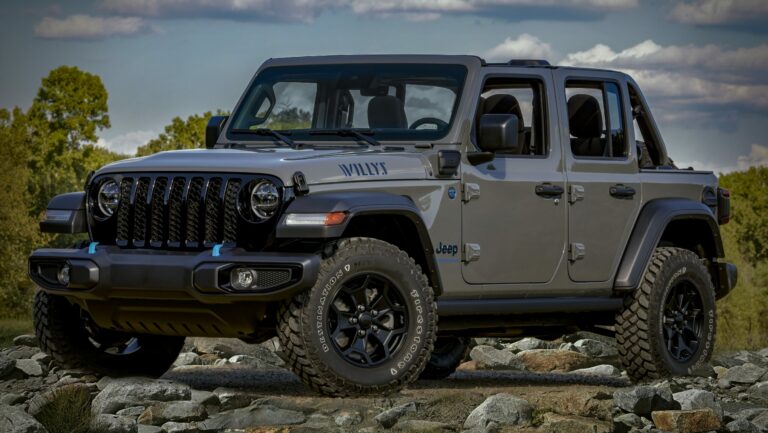Jeep Mutt For Sale: Your Comprehensive Guide to Owning a Piece of Military History
Jeep Mutt For Sale: Your Comprehensive Guide to Owning a Piece of Military History jeeps.truckstrend.com
The rumble of an engine, the distinctive utilitarian lines, and the undeniable aura of history – for many, the idea of owning a "Jeep Mutt" conjures images of rugged adventure and a connection to a bygone era of military service. Far from being just another vintage vehicle, the Jeep Mutt, officially known as the M151 MUTT (Military Utility Tactical Truck), is a significant piece of automotive and military heritage. Developed by Ford as the successor to the legendary Willys MB and Ford GPW Jeeps, the M151 served valiantly from the early 1960s through the 1990s, becoming an iconic symbol of the Vietnam War and countless other conflicts.
For enthusiasts, collectors, and those seeking a truly unique off-road machine or a fascinating restoration project, finding a Jeep Mutt for sale can be an exciting prospect. However, purchasing one of these historic vehicles comes with its own set of unique considerations, challenges, and rewards. This comprehensive guide will navigate you through everything you need to know about acquiring, understanding, and maintaining a Jeep Mutt, ensuring you’re well-equipped to make an informed decision.
Jeep Mutt For Sale: Your Comprehensive Guide to Owning a Piece of Military History
Understanding the M151 MUTT: A Brief History and Its Legacy
The M151 MUTT was a radical departure from its predecessors. Designed in the 1950s, it featured a unibody construction, independent coil spring suspension on all four wheels, and a more modern, lower profile compared to the classic flat-fender Jeeps. This design offered superior off-road performance, greater comfort for its occupants, and improved stability.
The M151 saw several iterations:
- M151 (1959-1964): The initial production model, known for its "swing-axle" rear suspension, which could be prone to rollovers if handled improperly, particularly with a heavy load or during sharp turns at speed.
- M151A1 (1964-1968): Introduced minor improvements, including changes to the suspension for increased load capacity and a modified fuel tank. The suspension design remained largely similar to the M151.
- M151A2 (1968-1982): The most common and significantly redesigned version, featuring a semi-trailing arm independent rear suspension that greatly improved handling and stability, addressing the rollover concerns of earlier models.

Serving in conflicts from Vietnam to the Gulf War, the M151 was eventually phased out by the Humvee (HMMWV) in the 1980s. Due to safety concerns related to the rollover propensity of the early models and, more critically, to prevent their re-use as military vehicles by potentially hostile forces, the U.S. government mandated that most M151s sold to civilians be "demilitarized." This typically involved cutting the unibody frame into sections, making it challenging, if not impossible, to legally title and register them for street use in many states. This critical detail is paramount for any prospective buyer.
Why Buy a Jeep Mutt? The Allure of a Military Classic
Despite the challenges, the M151 MUTT holds a unique appeal for several compelling reasons:
- Historical Significance: Owning an M151 is owning a tangible piece of military history. It’s a vehicle that has seen action, carried soldiers, and played a role in shaping global events.
- Unique Driving Experience: With no power steering, no power brakes, and a robust, unadorned interior, driving a Mutt is a raw, engaging experience unlike any modern vehicle. It connects you directly to the machine and the road (or trail).
- Robustness and Off-Road Capability: Designed for harsh military environments, the M151 is inherently tough. Its independent suspension provides excellent articulation, making it surprisingly capable off-road, especially the A2 variant.
- Community and Support: A vibrant community of M151 owners and enthusiasts exists worldwide. Forums, clubs, and specialized parts suppliers make restoration and maintenance a shared passion rather than an isolated struggle.
- Restoration Project Potential: For those who enjoy mechanical work, a Mutt offers a rewarding project. Bringing one of these vehicles back to life, perhaps even to concours standards, can be incredibly satisfying.
![]()
Navigating the Market: Where to Find a Jeep Mutt For Sale
Finding a Jeep Mutt for sale requires a targeted approach, as they are not typically found on mainstream used car lots.
- Online Marketplaces: Websites like eBay Motors, Facebook Marketplace, and dedicated military vehicle classifieds (e.g., G503.com, SteelSoldiers.com) are excellent starting points. Always scrutinize photos and descriptions carefully.
- Government Surplus Auctions: GovPlanet (often handles sales of demilitarized military equipment) is a primary source. Be extremely aware of the demilitarization status when buying from these sources, as they are almost always sold as "parts only" or "cut" vehicles.
- Specialized Military Vehicle Dealers: A handful of dealers specialize in vintage military vehicles. These sources often offer vehicles that have already undergone some level of restoration or have clearer legal documentation, though at a premium price.
- Military Vehicle Shows and Swap Meets: These events are fantastic for networking with owners, seeing vehicles in person, and sometimes finding private sales.
- Word-of-Mouth and Clubs: Joining military vehicle clubs or forums can open doors to private sales not advertised elsewhere.
Crucial Considerations Before Purchase: What You Need to Know
This section cannot be stressed enough. Purchasing an M151 MUTT is not like buying a typical classic car.
-
Legality and Titling (THE MOST IMPORTANT CONSIDERATION):
- Demilitarization: Most M151s sold to civilians by the U.S. government were legally required to be "demilitarized" by cutting the unibody frame in multiple places. This makes them unregisterable for street use in most, if not all, states in their original form. They are sold as "parts only" or "scrap."
- State Laws: Research your specific state’s Department of Motor Vehicles (DMV) laws before you even start looking. Some states might allow for "reconstructed" or "assembled" vehicle titles if you extensively rebuild a demilitarized frame, but this is a complex and often costly process involving inspections and significant documentation.
- Canadian vs. US Models: Some M151s were sold by the Canadian military to civilians without the "cut frame" requirement. These are generally easier to title in the US but are rarer and command higher prices.
- "Legally Titled" Claims: Be extremely skeptical of any seller claiming a "legally titled" US-sourced M151 that doesn’t provide irrefutable proof of its origin (e.g., Canadian surplus) or a clear, documented history of a reconstruction title. Many M151s on the road were titled through loopholes or by bending rules, which can lead to future legal issues.
-
Condition and Restoration Needs:
- Rust: The unibody construction means rust can be a significant issue, particularly in the floorboards, frame rails, and suspension mounting points. Thoroughly inspect for rust, especially structural rust.
- Engine and Drivetrain: Check for leaks, unusual noises, and overall mechanical health. The 2.3L inline-four engine is robust but requires proper maintenance.
- Electrical System: Military vehicles often have complex electrical systems that can be prone to issues after years of service or neglect.
- Suspension and Brakes: Essential for safety. Ensure all components are in good working order.
-
Parts Availability: While many common parts are available through specialized military vehicle suppliers (e.g., Army Jeep Parts, Vintage Military Parts), some specific M151 components can be rare or expensive.
-
Maintenance Skills: The M151 is not a modern vehicle. It requires basic mechanical knowledge for routine maintenance. If you’re not mechanically inclined, factor in the cost of professional service from someone familiar with vintage military vehicles.
-
Cost of Ownership: Beyond the purchase price, budget for potential restoration, parts, tools, insurance, and possibly transportation.
-
Driving Experience: Expect a spartan interior, manual steering and brakes, and a top speed that’s adequate but not exhilarating. It’s a military utility vehicle, not a comfortable cruiser.
The Buying Process: A Step-by-Step Guide
- Research and Set a Budget: Determine which M151 variant you prefer and what your budget allows for purchase and potential restoration. Crucially, confirm your state’s titling laws before setting a budget for a street-legal vehicle.
- Identify Potential Vehicles: Use the sources mentioned above. Create a shortlist of vehicles that match your criteria.
- Thorough Inspection: If possible, inspect the vehicle in person. If not, request detailed photos and videos, especially of the undercarriage, engine bay, and known rust areas. Ask for a video of the engine starting and running.
- Verify Documentation: For any M151 advertised as "titled," demand to see the title and any associated paperwork. Cross-reference VINs and chassis numbers. Be wary of vague answers. For "parts only" vehicles, ensure you understand the legal implications.
- Negotiation: Be prepared to negotiate, especially on vehicles requiring significant work.
- Transportation: Unless the vehicle is a confirmed runner and legally titled, arrange for flatbed towing or trailering.
- Post-Purchase Actions:
- Titling and Registration: If applicable, begin the process immediately. This can be the longest and most frustrating part.
- Insurance: Obtain specialized classic or military vehicle insurance.
- Initial Maintenance: Even if it’s a runner, perform basic fluid changes, filter replacements, and a thorough safety check before any serious driving.
Restoration and Maintenance Tips for Your Jeep Mutt
Bringing an M151 back to life or keeping it running smoothly is a rewarding endeavor.
- Prioritize Safety: Focus on brakes, steering components, tires, and lights first. Ensure the vehicle is safe to operate before anything else.
- Address Rust Promptly: Rust is the enemy of the unibody. Grind it out, treat it, and patch or replace affected panels.
- Engine Tune-Up: A new set of plugs, wires, points (if applicable), condenser, and fresh fluids can make a world of difference.
- Electrical System Overhaul: Many issues can be traced to old wiring, corroded terminals, or faulty switches. Consider replacing the entire harness if it’s in poor condition.
- Source Parts Wisely: Utilize dedicated military vehicle parts suppliers. Join online forums and clubs – other owners are an invaluable resource for finding obscure parts or advice.
- Invest in Manuals: An original Technical Manual (TM) set is essential for maintenance, repair, and understanding the vehicle’s systems.
- Join a Community: The collective knowledge of M151 owners is immense. Don’t hesitate to ask questions, share your progress, and learn from others.
Price Table: Estimated Jeep Mutt Values
Please note that these are approximate price ranges and can vary significantly based on location, seller, market demand, and most importantly, the vehicle’s legal title status (especially regarding the "cut frame" issue). Canadian-sourced or pre-demilitarization titled M151s will command significantly higher prices.
| Condition Category | Estimated Price Range (USD) | Key Considerations |
|---|---|---|
| Parts/Demilled Vehicle | $1,000 – $3,000 | Frame cut, no title for street use, suitable only for parts, display, or extensive reconstruction (check local laws). May be seized if operated on public roads. |
| Project Vehicle | $3,000 – $8,000 | Running but needs significant mechanical, electrical, or bodywork. Likely no street-legal title without major effort; primarily for off-road/private land use or as a long-term restoration. |
| Driver Quality | $8,000 – $15,000 | Runs and drives, serviceable condition, minor cosmetic flaws, might have a non-standard title (e.g., "reconstructed" or "off-road use only"). Generally the most common type found for sale to civilian enthusiasts. |
| Restored/Excellent | $15,000 – $30,000+ | Fully restored, often to military specifications or better. May include rare, legally titled (often Canadian-sourced or exceptionally rare pre-demil US models) vehicles. Ready for show or reliable driving (where legal). Prices can exceed $40,000 for top-tier examples. |
Frequently Asked Questions (FAQ)
Q1: Is a Jeep Mutt (M151) street legal?
A: This is the most critical question. Most M151s sold to civilians by the U.S. government were "demilitarized" by cutting the unibody frame, making them legally unsuitable for street registration in most U.S. states. Some states may allow them to be titled as "reconstructed" or "assembled" vehicles after extensive rebuilding and inspection, but this is a complex and often costly process. Canadian-sourced M151s were typically sold without these cuts and are generally easier to title. Always check your local DMV regulations before purchase.
Q2: Can I daily drive a Jeep Mutt?
A: While mechanically robust, the M151 is not designed for daily commuting. It lacks modern comforts (no power steering/brakes, limited heating/AC), has a lower top speed, and offers minimal crash protection. It’s best suited for recreational use, off-roading, parades, or as a collector’s item.
Q3: Are parts hard to find for the M151?
A: Generally, no. Thanks to a dedicated enthusiast community and specialized suppliers, most common parts are readily available. Some specific or rare components might require more searching, but the supply chain is robust for a vehicle of its age.
Q4: What’s the fuel economy like?
A: Don’t expect modern fuel efficiency. The M151 typically gets around 12-18 miles per gallon, depending on driving conditions, maintenance, and the specific variant.
Q5: What’s the difference between the M151, M151A1, and M151A2?
A: The main difference is the rear suspension design. The M151 and M151A1 had a "swing-axle" independent rear suspension that could be prone to rollovers under specific conditions. The M151A2 introduced a much safer "semi-trailing arm" independent rear suspension, improving handling and stability significantly. There were also minor differences in body features and electrical systems.
Q6: Is the M151 dangerous to drive due to rollover issues?
A: The M151 and M151A1 models did have a higher rollover propensity, especially when unladen, taking sharp turns, or during emergency maneuvers. This was addressed and largely mitigated in the M151A2 with its redesigned rear suspension. While the A2 is much safer, all M151s require a driver to be aware of their unique handling characteristics and drive accordingly, as they lack modern stability controls.
Conclusion
Owning a Jeep Mutt (M151 MUTT) is more than just acquiring a vehicle; it’s embracing a piece of history, a unique driving experience, and a rewarding project. While the journey to finding, purchasing, and maintaining one comes with distinct challenges, particularly concerning its legal status for street use, the satisfaction of preserving and enjoying this iconic military workhorse is immense.
For the dedicated enthusiast, the M151 offers an unparalleled connection to the past, a robust off-road companion, and a conversation starter wherever it goes. Approach the purchase with thorough research, a clear understanding of the legalities, and a passion for these remarkable machines, and you’ll find that the "Jeep Mutt For Sale" isn’t just an advertisement, but an invitation to a unique and fulfilling automotive adventure.






